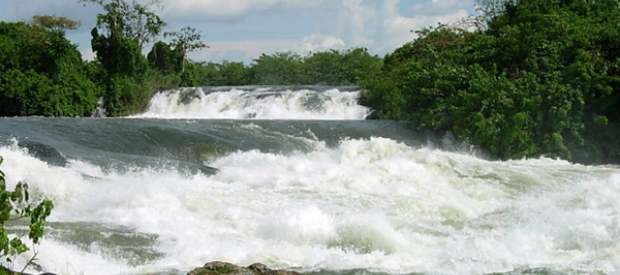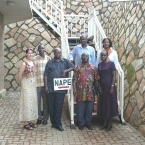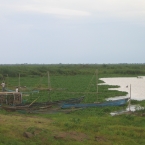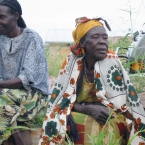Bujagali Dam, Uganda
The government of Uganda, with help from the World Bank, the African Development Bank and private companies, completed the construction of the 250 MW Bujagali Dam near Bujagali Falls on the Nile, just downstream from the Nalubale Dam and Kira Dam, in 2012. The dam was developed through a Public Private Partnership (PPP) entered into by the government of Uganda, Uganda Electricity Transmission Company Limited (URTLC) and the privately-owned Bujagali Energy Limited (BEL), a special purpose company, owned by the Industrial Promotion Service (Kenya), the Aga Khan fund for Economic Development and Sithe Global Power LLC. The PPP contract will expire in 2042, after which full ownership of the dam will revert back to the Ugandan government. By the time the Bujugali Dam was completed, the total costs had skyrocketed from the initial US$800 Million to $1.3 billion, including the transmission line.
Unfortunately, the expected reduction in electricity costs has not been realized, and instead the average cost of electricity increased after the dam was commissioned. It's now the most expensive hydropower in Africa, making it unaffordable for many Ugandans. The dam drowned the treasured Bujagali Falls – a spectacular series of cascading rapids that Ugandans considered a national treasure. The dam submerged a place with great cultural and spiritual importance of the Basoga people, indigenous dwellers in the dam’s project area. Issues of compensation and resettlement related both to the Bujagali Dam and its transmission lines have not been fully resolved. As a result, the economic benefits of the Bujugali Dam have not yet been realized.
Local environmentalists say the costly dam harmed Uganda’s chances of pursuing more sustainable energy alternatives, pointing out that the Bujugali Dam failed to help the 86% of Uganda’s population who are not connected to the national grid. NGOs are pressing for the development of alternative renewable energy sources, a sustainable fuel wood program, and improved efficiency to reduce the very high levels of waste in the existing system. Groups are also concerned about the dam’s impact on the health of Lake Victoria, which supports millions of people and extensive biodiversity.
However, the government of Uganda continues to plan for more dams on the system, even though Lake Victoria has suffered a dramatic drop in its water level in recent years due to dam releases and climate change. Uganda needs more energy, and a host of options (including geothermal) have been presented to the government. But despite the costly mistake of the Bujugali Dam, the government continues to pursue large hydro to meet the needs of the country.







